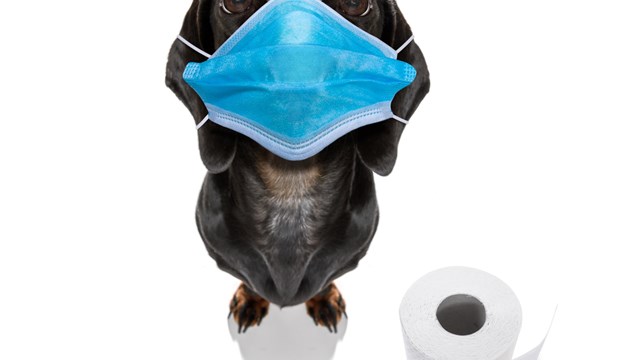The coronavirus crisis has brought about many unwelcome changes to households around the world—but it has also allowed some to make or hasten lifestyle choices that were impractical or otherwise out of reach before. One such choice has been adding a pet - and specifically, a dog - to the family. With travel restricted and working and schooling largely happening at home, families across the country have decided that if there was ever a time to get a pup, this is it.
According to the American Society for the Prevention of Cruelty to Animals (ASPCA), “There’s no doubt that the public’s desire to support their local shelters by fostering vulnerable animals has been demonstrated through an enormous and unprecedented response. In the first few weeks of stay-at-home orders, the ASPCA saw a nearly 70 percent increase in animals going into foster homes through our New York City and Los Angeles foster programs, compared to the same period in 2019. We also saw nearly 1,600 people complete the ASPCA’s online foster application during the first two months of the pandemic, representing an increase of approximately 400 percent (emphasis added) when compared to 2019.”
While these statistics specifically refer to temporarily fostering shelter animals, and not to outright adoption or acquisition of a pet through a breeder or pet store, many articles and news items over the last many months have noted that increased time at home, plus the desire for distraction, companionship, and excuses to get outside has made pets appealing to many households during COVID - especially those who had previously considered adding a four-legged family member but couldn’t make it work on account of jobs and other out-of-the-house commitments. And for families that already included furry members prior to COVID, the time with them that staying at home has afforded has been a silver lining in an otherwise dark and massive cloud.
But those who reside in multifamily buildings or communities or any type of home that does not have its own private, securely fenced outdoor space have an important question to answer: If I or someone in my household is exposed to COVID-19, or if one of us tests positive for or becomes sick with it, who is going to walk the dog three or more times a day?
There’s No App for That
After months of lockdown in the spring and a seemingly unending outlook of staying at home as much as possible for the remainder of the pandemic, most households have figured out how to meet their basic needs with the online tools available to us. Groceries? They’ll be delivered by 8pm on Tuesday. Entertainment? Netflix and Chill it is. Exercise? The YouTube queue is full of cardio classes. But walking the dog requires an actual human to physically take the dog to a place outside of the home where it is appropriate to “do its business”—something that modern technology has yet to solve. And in many co-ops, condos, and HOAs, to accomplish this, one must traverse and contact areas that are common to other residents and the public, thus violating the purpose of quarantining.
Even though buildings and communities throughout the country are increasingly pet friendly—owing both to the demonstrated increase in property value that such policies proffer and to case law that clarifies housing providers’ responsibilities to provide reasonable accommodations to residents who require assistance animals for both physical and emotional support under Fair Housing Act (FHA) rules—few have yet considered how they will handle a situation in which a resident with a dog is quarantining for COVID purposes and thus cannot take their dog out for walks. Property managers and board members we contacted for this article indicate that their buildings or communities have not put any policies or recommendations in place for these scenarios.
With the current surge in coronavirus cases across the nation that sees no sign of ebbing as cold weather descends and holidays approach, the likelihood of a multifamily housing resident needing to quarantine becomes unfortunately greater. Aside from testing positive or someone in their household or with whom they’ve had close contact testing positive or exhibiting symptoms, requirement to quarantine or self-isolate for at least 14 days could also be mandated by travel policies or future lockdown orders that are thus far still state-dependent and continue to change as numbers rise. Given the upward trend in ownership or fostering of pets during this time, the chances are higher that a quarantining resident will have a dog, so it might be time for boards and managers to at least think about the best way to address the issue.







Leave a Comment